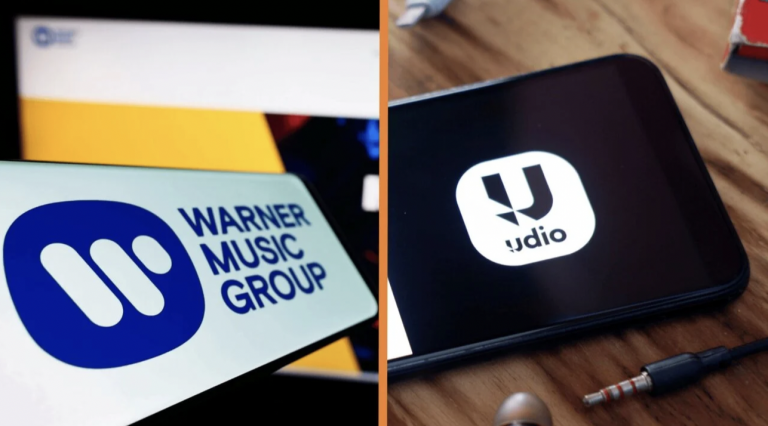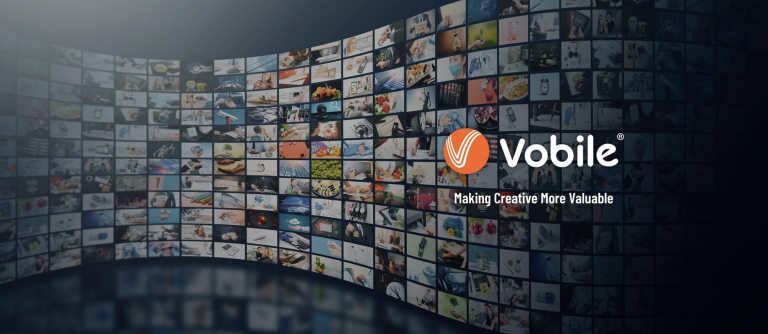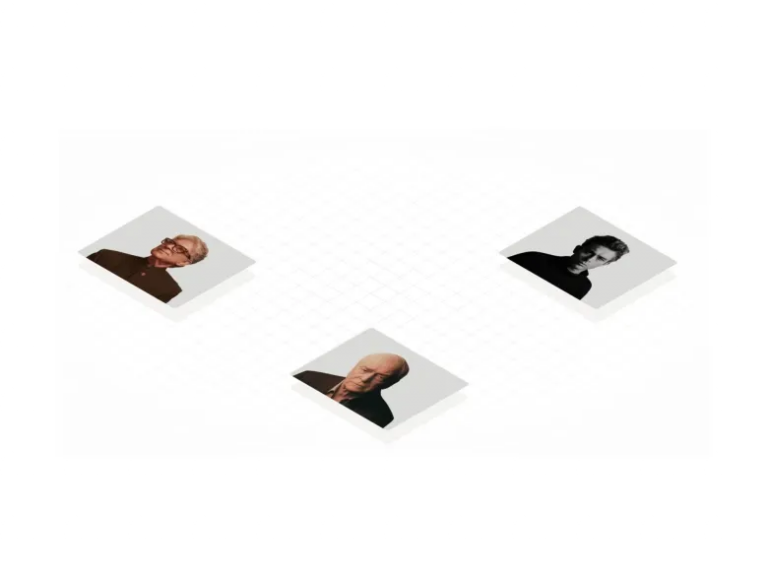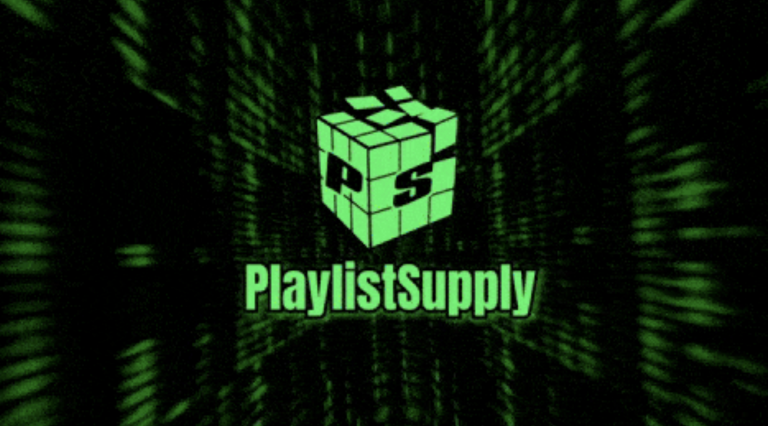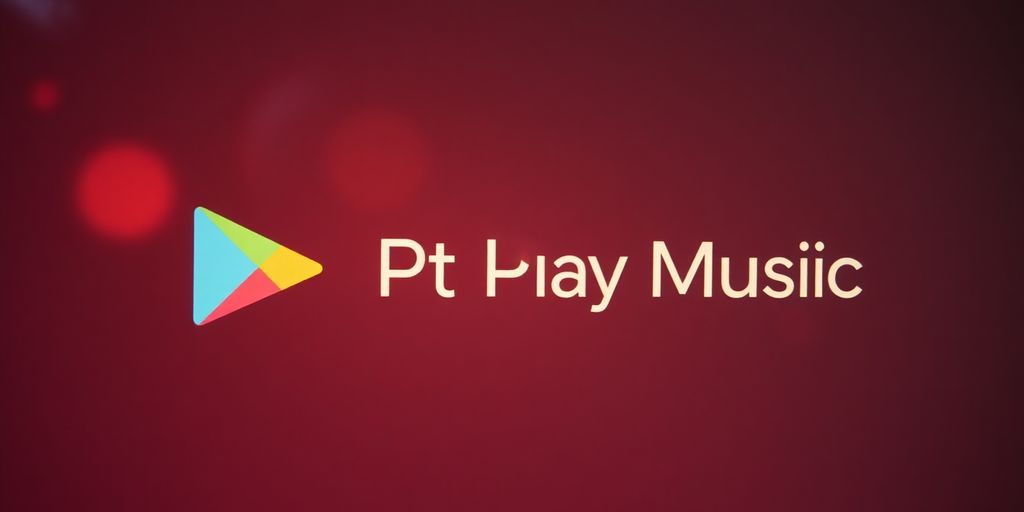
It feels like just yesterday we were all uploading our music libraries and enjoying a pretty solid streaming service, but Google Play Music is officially a thing of the past. This service, which started as a beta back in 2011, was a big deal for Android users, offering a way to challenge Apple’s iTunes dominance. It had some really neat features that made it stand out, like being able to store your own music in the cloud. But as Google’s product strategy often goes, things changed, and we ended up with YouTube Music. Let’s take a moment to remember what made Google Play Music special and look back at its journey.
Key Takeaways
- Google Play Music was a pioneering service that aimed to compete with Apple’s iTunes, launching in 2011.
- A major draw of Google Play Music was its ability to upload and store personal music libraries in the cloud, accessible from anywhere.
- Many users found the transition to YouTube Music disappointing, citing feature gaps and catalog differences compared to Google Play Music.
- Google’s strategy of introducing new products and sometimes discontinuing older ones has led to user frustration and questions about loyalty.
- The shutdown of Google Play Music highlights the importance of services that allow users to retain access to their legally purchased music and personal libraries.
The Rise and Fall of Google Play Music
Google Play Music really felt like a game-changer when it first showed up. It was Google’s big move into the music streaming world, aiming straight for Apple’s iTunes. Back in May 2011, it launched as "Music Beta by Google" at the same time Google added movies to the Android Market, which we now know as the Google Play Store. This was a big deal because Android was still trying to catch up to Apple’s whole ecosystem, and having a solid media service was a major piece missing. Before this, Google only offered a basic music player for Android phones. They even shipped the Amazon MP3 Store with the very first version of Android, which is kind of funny when you think about it. But with Google Play Music, they finally had their own thing.
A New Challenger to iTunes
When Google Play Music first arrived, it was clear they wanted to compete with Apple’s iTunes. It was a bold move, trying to offer a music service that could stand toe-to-toe with what Apple had built. This was a time when streaming services were just starting to become a big thing, and Google wanted a piece of that action. They were trying to build out their own digital media empire, and music was a key part of that plan. It was all about giving Android users a reason to stay within the Google ecosystem for their entertainment needs.
From Beta to Full Release
Starting as "Music Beta by Google" in 2011, the service went through its testing phases before becoming the full Google Play Music we knew. This transition period was important for ironing out bugs and getting user feedback. It was a gradual process, but it showed Google was serious about making this a strong contender in the music market. The goal was to create a robust platform that could handle streaming, purchases, and personal music libraries.
The Golden Era of Google Play Music
For a while there, Google Play Music was pretty great. It let you upload your entire music collection to the cloud and listen to it anywhere, which was super convenient. Plus, you could buy music and add it to your library. It felt like a complete package, a solid product that didn’t really need much changing. Many people even thought it was good enough to compete with Spotify, and for some, it replaced their Spotify accounts entirely. It offered a simple, clear experience that many users really appreciated.
Google’s approach to services often means users get something good, but then it gets replaced by something else that doesn’t quite measure up. It’s a pattern that makes it hard to get attached to their products.
- Cloud Music Library: Uploading your own music was a standout feature.
- Purchased Music: Buying albums directly from the store was straightforward.
- Accessibility: Access your music across multiple devices easily.
It’s interesting to look back at how music consumption has changed over the years. Services like this really shaped how we listen to music today, moving from physical media to digital downloads and then to streaming. It’s a big shift from how things were even a decade ago, and Google Play Music was part of that evolution. Music streaming services really took off in the 2010s.
User Experiences and Migrations
A New Challenger to iTunes
When Google Play Music first arrived, it felt like a breath of fresh air in the digital music landscape. It wasn’t just another place to buy songs; it was a whole ecosystem. For many, it offered a compelling alternative to the established giant, iTunes. The ability to not only purchase music but also to upload your own collection was a big deal. It meant all your music, whether bought or ripped, could live in one place, accessible from anywhere. This was a significant shift, making music ownership feel more flexible and personal than ever before.
From Beta to Full Release
Like many Google products, Play Music started as a beta. It was a bit rough around the edges, but the core idea was strong. Users could upload their music library, create playlists, and stream it from their devices. As it evolved, Google added more features, including radio stations and curated playlists. The transition from beta to a full, polished product was gradual, but it built a loyal user base who appreciated the service’s growing capabilities. It felt like a product that was genuinely listening to its users.
The Golden Era of Google Play Music
There was a period where Google Play Music truly hit its stride. It was more than just a music player; it was a comprehensive music hub. The cloud library was robust, allowing for massive uploads without hassle. The interface was clean and intuitive, making it easy to manage your collection. Plus, the integration with other Google services meant your music was always at your fingertips, whether on your phone, tablet, or computer. This era represented a high point for Google’s approach to digital music, offering a service that felt both powerful and user-friendly. Many users fondly remember this time as the peak of Google’s music offerings, a period before the eventual shift and eventual shutdown.
Disappointment with YouTube Music
The transition from Google Play Music to YouTube Music was, for many, a deeply disappointing experience. YouTube Music felt like a step backward. Features that users relied on in Play Music were missing, and the overall experience was clunky. The migration process itself was often buggy, leading to lost playlists or corrupted data. It was hard to understand why Google would replace a beloved service with something that felt so unfinished. Many users expressed frustration online, sharing stories of how the new service failed to meet their expectations.
Seeking Alternatives and Workarounds
Faced with the shortcomings of YouTube Music, many users began looking for alternatives. Some tried to find ways to keep their music libraries organized and accessible outside of Google’s ecosystem. Services like Free Your Music emerged, aiming to help users transfer their playlists and libraries between different streaming platforms. Others opted for entirely different music services or even returned to managing their music files locally. The search for a suitable replacement became a common topic of discussion among former Play Music users, highlighting the void left by its closure.
The Value of Purchased Music
One of the most significant points of contention during the migration was the handling of purchased music. Google Play Music allowed users to buy albums and tracks, and these purchases were meant to carry over. However, the reality was often different. Users found that their purchased music wasn’t always available in YouTube Music, or the quality was lower. This raised questions about the long-term value of buying music from Google if it wasn’t reliably accessible. It made people reconsider where they invested their money for digital music, valuing services that offered more stable ownership and access.
The way Google handled the transition felt like a betrayal to many long-time users. It wasn’t just about a change in interface; it was about losing a service that had become integral to their daily lives. The lack of clear communication and the buggy migration process only added to the frustration, leaving many feeling unheard and undervalued.
Google’s Product Strategy and User Loyalty
It’s a common observation that Google has a habit of launching new products with a lot of fanfare, only to let them fade away or shut them down later. This pattern really makes you wonder about their overall product strategy and how it affects user loyalty. It feels like they’re always trying to get people hooked on something new, maybe to see what sticks, but it often leaves long-time users feeling a bit abandoned.
The Incentive Structure for New Products
Google often seems to push new services by offering incentives, like free trials or bundled features. The idea is probably to get users to try them out and hopefully stick around. But when these new products don’t quite measure up or eventually get replaced, it creates a cycle of disappointment. It’s like they’re always chasing the next big thing without fully supporting what they already have.
Comparing Google’s Approach to Apple’s
When you look at how Google handles its product lineup compared to, say, Apple, the differences are pretty stark. Apple tends to be more deliberate, focusing on refining existing products and ensuring a consistent experience. Google, on the other hand, feels more like a scattershot approach. They’ll release something, then tweak it, then maybe replace it entirely. This constant flux can be really frustrating for users who just want a reliable service. It makes you question if they’re really thinking about the long-term user experience or just short-term gains. For instance, Apple’s approach to hardware and software integration has historically led to a more stable ecosystem, which builds trust over time. Google’s rapid iteration, while sometimes innovative, often feels like a gamble for the user.
The Impact of Service Shutdowns on Trust
Every time Google shuts down a service, especially one that people have invested time and data into, it chips away at user trust. Think about Google Play Music – a lot of people had their entire music libraries uploaded there. Having to migrate to YouTube Music, which many found lacking, felt like a betrayal. It makes people hesitant to commit to new Google products because they worry they might be next on the chopping block. This unpredictability makes it hard to build lasting loyalty. It’s tough to feel invested in a platform when you’re constantly worried about its future. This is something that companies like Spotify seem to handle better, maintaining a consistent service over many years, which helps build strong user relationships.
The constant churn of Google products creates a sense of unease. Users invest time and effort into these platforms, only to see them disappear or be fundamentally changed. This makes it difficult to build genuine loyalty when the future of any given service feels uncertain. It’s a cycle that leaves many feeling like they’re just a number, easily discarded when a new initiative comes along.
Key Features That Made Google Play Music Stand Out

Google Play Music really had some standout features back in the day. It wasn’t just another streaming service; it offered a lot more flexibility for music lovers. The ability to upload your own music library to the cloud was a game-changer. This meant you could access your entire collection, whether it was purchased albums or ripped CDs, from any device with an internet connection.
Cloud Music Library and Accessibility
This cloud library feature was pretty revolutionary. You could upload thousands of songs, and they’d be available wherever you logged in. It was like carrying your entire music collection in your pocket, without needing a massive hard drive. This made it super easy to switch between your phone, tablet, or computer.
Seamless Integration and User Interface
The interface itself was generally clean and easy to use. Finding music, creating playlists, and managing your library felt pretty straightforward. It integrated well with other Google services too, making the whole experience feel connected. It was a solid platform for managing both purchased music and streaming content.
The Ability to Upload Personal Music
This is probably the feature most people miss. Google Play Music let you upload up to 50,000 songs from your personal collection for free. This was huge for people who had large music libraries they’d built up over years. It meant you weren’t limited to just what the streaming service offered; your own music lived there too. It was a big reason why many people stuck with it, even when other streaming options were available. Many users are still looking for a good alternative for this, with some even considering services like Apple Music for their library management needs.
The Transition to YouTube Music

Unfulfilled Feature Parity
Many users felt that YouTube Music simply didn’t measure up to Google Play Music, especially when it came to features. It was frustrating because Google Play Music had been around for a while, and people got used to how it worked. Things like being able to easily see your queue, save it as a playlist, or even just get high-resolution album covers were missing in the early days of YouTube Music. It felt like a step backward for a lot of us who relied on those functionalities daily.
It’s tough when a service you’ve used and liked for years gets replaced by something that feels less capable. The transition wasn’t smooth for many, and the missing pieces were a constant reminder of what we’d lost.
Catalog Differences and User Preferences
While YouTube Music boasts a massive catalog, sometimes that breadth came at the expense of quality or specific versions. Some users found that certain albums weren’t available in their preferred mastering, or that obscure tracks they loved from Google Play Music were harder to find or just weren’t there at all. It’s a trade-off, I guess. You get a lot more obscure stuff, but sometimes the core catalog felt a bit off. For those who really dug into niche genres or specific live recordings, this was a significant issue. It made finding exactly what you wanted a bit of a treasure hunt, and not always a successful one.
The User Interface Challenges
Navigating YouTube Music could be a real pain point. The interface felt clunky to many, especially compared to the cleaner design of Google Play Music. Scrolling through your library, which used to be a quick action, became a slow process. The app would load albums or songs one page at a time, making it tedious to browse your collection. This slowness really impacted the overall user experience, turning simple tasks into time-consuming chores. It made you miss the days when finding your music was just a few clicks away. Thankfully, some updates have tried to address this, like the introduction of Consistent Volume, but the initial rollout left a lot to be desired.
The Legacy of Google Play Music
Google Play Music, which first arrived as "Music Beta by Google" back in 2011, really tried to be a big deal in the music streaming world. It was Google’s answer to Apple’s iTunes, aiming to give Android users a solid media service. For a long time, it felt like it was hitting its stride, offering a pretty straightforward way to manage your music.
A Trailblazing Music Service
What made Google Play Music stand out was its cloud music library. You could upload your own music, and then access it from pretty much any device. This was a huge deal back then, especially for people who had large music collections they’d ripped from CDs or bought over the years. It felt like you owned your music and could take it with you. Plus, the interface was pretty clean and easy to use. It just worked, you know? It was a solid product that didn’t really need a massive overhaul.
Lessons Learned from the Shutdown
When Google decided to shut down Google Play Music, it left a lot of people scrambling. The transition to YouTube Music wasn’t smooth for many. Features were missing, and the way your uploaded music was handled felt like an afterthought. It made you wonder about the long-term commitment to Google’s services. Losing access to legally purchased music due to a service shutdown is a real concern. It’s a good reminder to back up your music library, just in case. You never know when a service might disappear, and you don’t want to lose your collection with a single click. It’s important to have a plan for your digital music, especially if you’ve invested a lot in it over the years.
The Search for a True Successor
Even now, people are still looking for something that truly fills the void left by Google Play Music. YouTube Music has its fans, but for many, it just doesn’t capture the same magic. The way Google handles its product lineup can be a bit jarring. They often introduce new things but then phase out older, well-loved services without a perfect replacement. It makes you question sticking with Google products when you see this pattern. Unlike Apple, which has kept its iTunes store running alongside Apple Music, Google’s approach has been more about replacing services entirely. This can make users hesitant to invest time and money into new Google offerings, fearing they might face the same fate.
So Long, Google Play Music
And so, Google Play Music has officially shuffled off this mortal coil. For years, it was a solid way to manage your music, whether you bought it or uploaded it yourself. Many of us found a home there, a place where our music libraries lived. Now, that space is gone, replaced by YouTube Music, which, for many, just isn’t the same. It’s a familiar story with Google products – something works well, and then it’s changed or shut down. While the music may have stopped, the memories of using Google Play Music will stick around for a while. It’s a shame to see it go, but that’s just how things are sometimes.
Frequently Asked Questions
What was Google Play Music?
Google Play Music was a music streaming service and online music store that Google launched in 2011. It allowed users to store their music library in the cloud, stream songs, and buy music. It was a big deal because it competed with services like iTunes and offered a way to keep your music collection accessible from anywhere.
Why did Google shut down Google Play Music?
Google decided to shut down Google Play Music to focus on YouTube Music. While both services offered music, YouTube Music is meant to be the main platform going forward. This change wasn’t sudden; Google had been moving users over to YouTube Music for a while.
Why were people disappointed with YouTube Music?
Many users were unhappy with the switch to YouTube Music. They felt it didn’t have all the features of Google Play Music, like easy access to uploaded songs or certain playback options. Some people found the new app confusing or less user-friendly, leading them to look for other music services.
What happened to music people bought on Google Play Music?
A major concern for users was what would happen to the music they had legally purchased through the Google Play Music store. Google provided a way to transfer this music to YouTube Music, but some users worried about losing access or not being able to play their purchased songs easily.
How does Google’s strategy affect user loyalty?
Google’s strategy often involves launching new products and services, sometimes leading to the shutdown of older ones. This can make it hard for users to stay loyal because they worry that a service they like might disappear. It’s different from companies like Apple, which tend to keep their services running for longer.
What made Google Play Music special?
Google Play Music stood out because it let you upload your own music collection to the cloud, making it accessible on any device. It also had a clean interface and worked well with other Google services. The ability to upload personal music was a key feature that many users miss.

